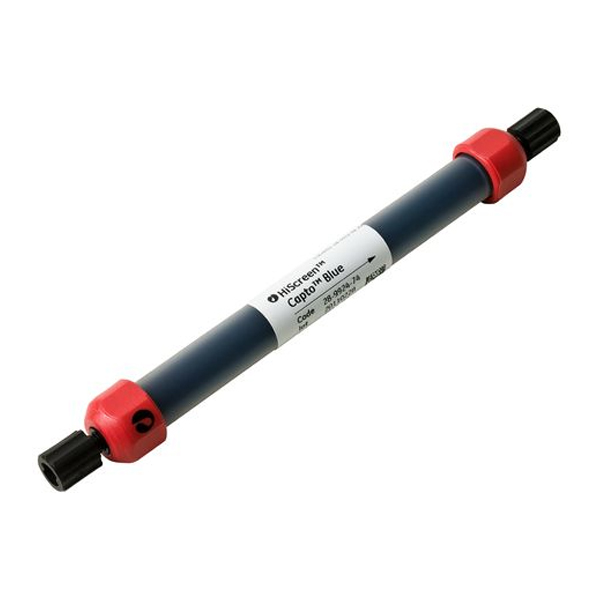

Today, Fabs are produced using modern genetic engineering approaches.” Papain cleavage yields two monovalent Fab fragments, each composed of one variable heavy chain (V H) and one variable light chain (V L) linked by disulfide bonds and displaying a single antigen-binding site. Fab – “Fabs are considered the first generation of antibody fragments and were initially generated by cleavage of an intact antibody using an enzyme, such as papain.
CAPTO L RESIN FULL
Lastly, antibody fragments have different pharmacokinetics than full length antibodies and this can be attractive for certain applications.Ī helpful breakdown of the antibody fragments types was provided in the white paper: coli or yeast instead of more costly mammalian cell systems.


Also due to their small size and because they are non-glycosylated, they can be produced using microbial systems such as E. The authors describe that due to the smaller size of antibody fragments they can more easily penetrate into tissues. Antibodies fragments used to be generated by cleaving an intact antibody using an enzyme, but now they are mostly developed using genetic engineering.Īntibody fragments offer some unique advantages as compared with full-length antibodies. The multi-domain structure of antibodies permits the creation of smaller antibody fragments while still including the antigen binding domain. In the white paper, authors explain that antibody fragments are just that, portions of a full-length antibody. In the paper there is a wonderful background on what antibody fragments are, their make up, manufacture and an improved approach to purification. These four resins together provide a toolbox approach that covers purification of nearly all Fabs fragments and a majority of smaller antibody fragments. These resins can be used without the need for lengthy process development or optimization. In the white paper, the authors describe a platform purification approach that is comprised of four different resins, each of which provides a platform solution for a specific type of antibody fragment. To better understand antibody fragments, their production and purification, my research led me to a very interesting white paper, “A Platform Approach to Purification of Antibody Fragments”, by GE Healthcare.

Bi-specific antibodies combine two antigen binding regions into a single therapeutic, such as Blincyto ®.Īntibody fragments are also being explored for use in antibody drug conjugates where a full length antibody or an antibody fragment is linked to a cytotoxic agent designed to kill target cells when internalized and released antibody gene therapy applications and antibody fragments are also being linked with liposomes or nanoparticles to improve drug delivery. Several antibody fragments have been approved and are commercially available, including: ReoPro®, Lucentis®, and Cimzia®.Īntibody fragment-based therapeutics also include bi-specific antibodies. Antibody fragments have some advantages over full-length antibodies and several antibody fragment-based biotherapeutics are in clinical research. Due to the multi-domain structure of antibodies, it is possible to create smaller antibody fragments that still include the antigen-binding domain.
CAPTO L RESIN TRIAL
While there are many new monoclonal antibodies in the clinical trial pipeline, there are also some innovative drugs made from just an antibody fragment. Since the 1980’s monoclonal antibodies have revolutionized medicine and become a vital tool in fighting many diseases.


 0 kommentar(er)
0 kommentar(er)
